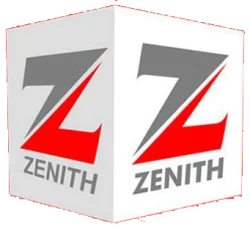1.1 Introduction
Fees payments by students in Ekiti State University are made through cash deposits, Electronic Funds Transfer (EFT) and Bank drafts to the school's accounts in specific bank branches (Makerere University, 2004). Organizations want to make it easy and convenient for customers to pay, so they offer multiple choices of payment types and channels”. Therefore, the project provides an alternative method that enables secure online fees payment by students and their sponsors.
As a prelude to other parts of this study, this chapter will discuss the background upon which this study was initiated, the statement of problems that led to this study, the Aim and Objectives of the study. Others are Significance of the study, Scope of work, Limitations of the Study and Definition of technical terms.
1.2 Background of Study
Developments in Information and Communication Technologies (ICTs) have made impact in all sectors of the society, including education. In higher education, application of ICTs in form of e-learning is changing the mode of learning and teaching processes [Abrazhevich, D. (2004).]. School management is now done online, records are being kept in databases that are accessible through the web. Also, Registration, payment of schoolfees, generating timetables and much more are done using the web. The world of IT has gone far and wide that now makes us see the importance of using automated system rather than manual system. Referring to the problem of Fees, faculty fees and hostel allocation as the Online Fees Management System (ODFMS) problem, given the large number of students that are typically involved in such problem, there is a growing interest in automating the process of payment using centralized matching schemes that incorporate efficient algorithms for ODFMS. Examples of similar automated systems are in use in several universities.
In recent years, the advancement of technology has thus brought us into a new era of Web based systems. These systems are also known as enquiry systems and have the ability to input data, with a guaranteed response time and an assurance that the information is accurate and timely, then one is said to have a “Real Time System” [LaPlante, Philip A., (2007)]. A real time system is also a Web based system and comprises mainly of four (4) main components:
- A data-gathering component that collects data from the external environment.
- An analysis component that transforms the received information as required by the application.
- A control component that responds to the external environment.
- A monitoring component that co-ordinates all other form of these components so that real-time response can be achieved.
Due to these advancements, organization need no longer be centralized when information services can reach the home and offices for processing from a number of geographical locations. However, Web based systems have helped tremendously in every field of human existence today. Hence this project work provides and creates an Online Fees Management System (ODFMS) to the Ekiti State University, Computer Science department through the development of a Web based system that will in turn improve the efficiency and effectiveness of the university.
1.3 Statement of the Problem
In most Nigerian Institutions of higher learning especially the Universities and Polytechnics, student’s enrolment to these higher institutions is continuously on the increase, and each year every student is expected to register for a session and therefore the student has to make payment for the session. This increase in student’s population over the years makes the period of registration stressful and payment of Fees and hostel accommodation a very tedious exercise. The existing system of payment of Fees in Computer Science department, Ekiti State University, involves a student going online to generate a transaction ID which is then taken to the bank for payment. If the student needs to pay Fees, he/she also have to go online, generate another transaction ID and then take it back to the bank.
This process is causing a lot of problems because many students will have to line up in unending queues in banks where so many unforeseen events might happen. A student might lose his/her money; get tired due to stress and so many other events. Most students during registration are always at home and will have to come back to school for registration because most banks outside Uli does not provide this service.
The existing system or mode of payment results to stress due to the factors and conditions encountered during registration. Every new and returning student has to register at the beginning of every session. Most students are in a state of confusion during registration either because they do not currently have the money to pay for their Fees or will have to come down to school to pay during process with no guaranteed that he/she will be successful.
The processes of manual Fees payment can result to problems which in turn prevent students from writing exams in time, maybe due to the slow rate of processing the Fees or from the misplacement of the departmental fee tellers because of lack of adequate storage medium.
Based on these observations, a Web based system for Payment which will enable students overcome these problems during registration is designed and implemented. The system will allow a student to open an account at a designated bank and keep his/her Fees in the account anytime and any day. Due to the present situation of the country, parents can also keep their children’s entire Fees in their account. Therefore, the system allows you to keep your Fees incrementally or at once. The development of this Web based system will eliminate the major problems of the existing system.
1.4 Aim and Objectives of the Study
The main aim is to design and develop an online Payment Monitoring Information System which monitors the payment and processing of Fees and allows students to securely and comfortably pay their Fees from anywhere, using any internet-enabled device. In achieving this aim, the following specific objectives were laid out as follows:
- To create a Web based system that will solve the problems of the existing system being used for Fees monitoring.
- To develop a secured database system for easy data storage and retrieval
- To design a software that will allow students to pay their Fees and hostel accommodation anywhere and anytime during registration.
- To develop a software that will Ease and speed up payment processing by incorporating an attractive and rich user interface with search algorithms present for faster data retrieval and eliminate anything that can cause confusion.
1.5 Significance of the Study
Literature asserts that, for nearly every business, the simple act of collecting payments from consumers is actually quite complex and yet organizations want to make it easy and convenient for customers to pay, so they offer multiple choices of payment types and channels. Therefore, this project proposed the development of an alternative platform that enables students and their sponsors securely pay university fees online from wherever during registration.
This will also reduce the lengthy queues, and congestion at banks for payments. Sponsors of students will also be able to save their wards Fees before the period of registration and as such will make it easier to cater for their wards.
This project can also serve as a reference material to scholars who are conducting research int the field of online payment system.
1.6 Scope of the Study
The scope of this project is to develop an Online Fees Management System (ODFMS) for the Ekiti State University, Computer Science department. The system will accommodate only the administrator, bank staffs and students into one integrated Database system. This project is also scoped to only undergraduate programs in Computer Science department.
The system is a prototype and will be hosted on a localhost and not a live server. The localhost provides all the services provided by an online server. It will be accessed using a browser.
1.7 Limitations of the Study
During the course of this study, many things militated against its completion, some of which are:
- Time Constraint: The time frame given to accomplish this project was very short due to school academic calendar and it was carried out under pressure which made the researcher not to implement some necessary features.
- Establishment Policies: Establishment policies posed a serious limitation as most staffs are not ready to release information needed for this project work. There were lots of information needed from the staffs of this institution to enhance the study which took them time to release or they did not release at all for security purposes, hence the scope was reduced.
- Research material: availability of research material is a major setback to the scope of the study.
- Frequent power failure: This made the researcher append more money on fuel to ensure sustainable power.
- Financial Constraint: Insufficient fund tends to impede the efficiency of the researcher in sourcing for the relevant materials, literature or information and in the process of data collection (internet).
1.8 Definition of Terms
Web Site: A website is a collection of many interconnected web pages organized by a specific college, organization company etc., containing web pages (good and commodities) on the Internet. Web site is stored on web servers. There are many web site and thousands of HTML pages on each web site.
Hyperlinks: Hyperlinks are highlighted words and phrase you find on web documents that you can click on as to jump to some other documents or Internet services. (Clex 1990)
Offline: Disconnected from computer network; describes a computer terminal or peripheral device disconnected from a computer network. (Wikipedia 2011)
System: Set of computer components that is, an assembling of hardware, software and peripherals functioning together. (Fans 2011)
Automation: This is the use of control system such as computer to control and process data, reducing the need for human intervention.
Database: This refers to a large store of related data on a computer that can be accessed and modified by the user.
Record: Is a document made or received in the course of a practical activity as an instrument or a by-product of such activity, and set aside for action or reference.
Password Protected: This is a secret code that a user must type into a computer to enable him access it or its applications. This is composed of numbers, letter, special character or a combination of any of the above categories.
Receipt: A piece of written note that attests to a payment made to one another caring the amount paid and balance if incurred usually signed by both party or one end.




